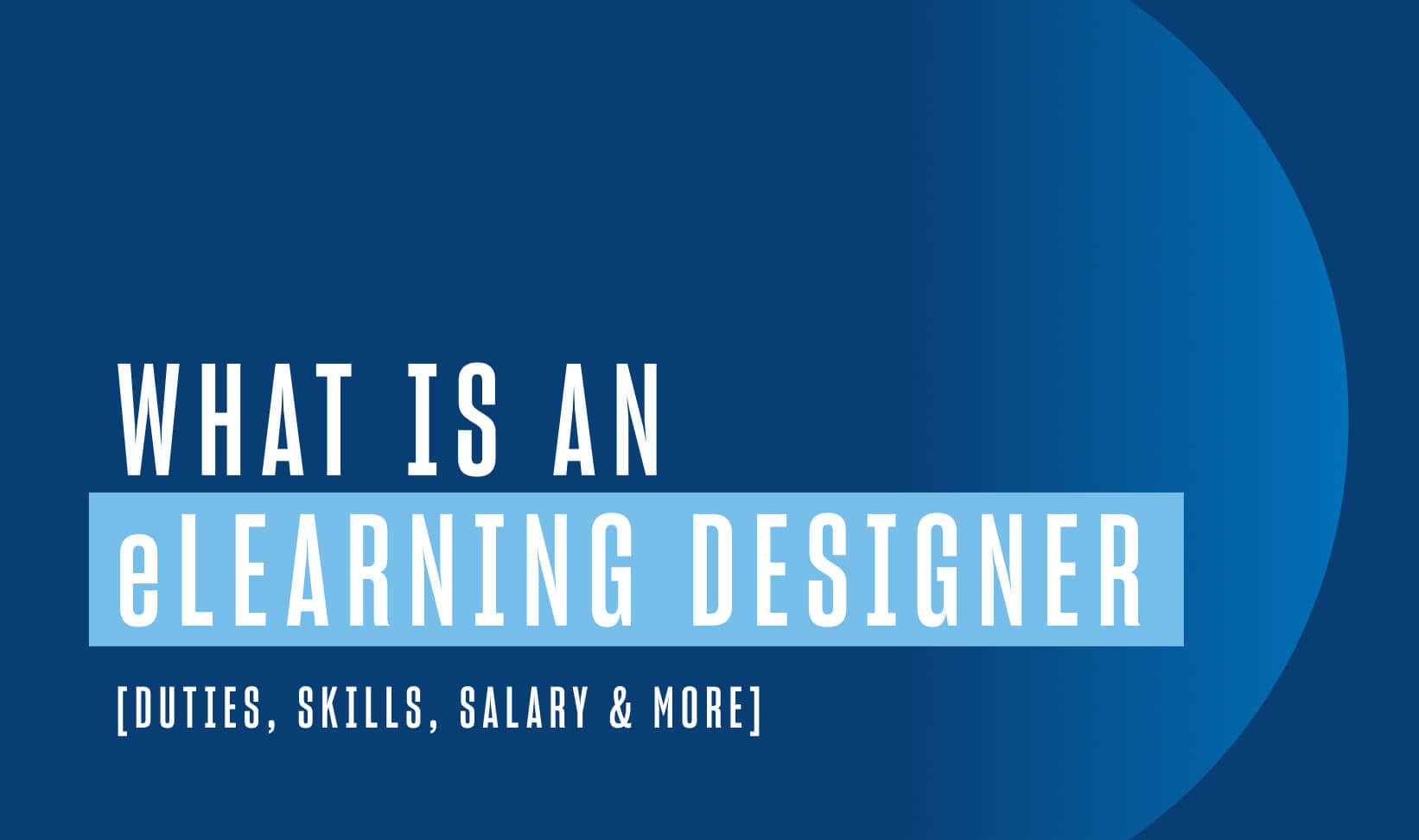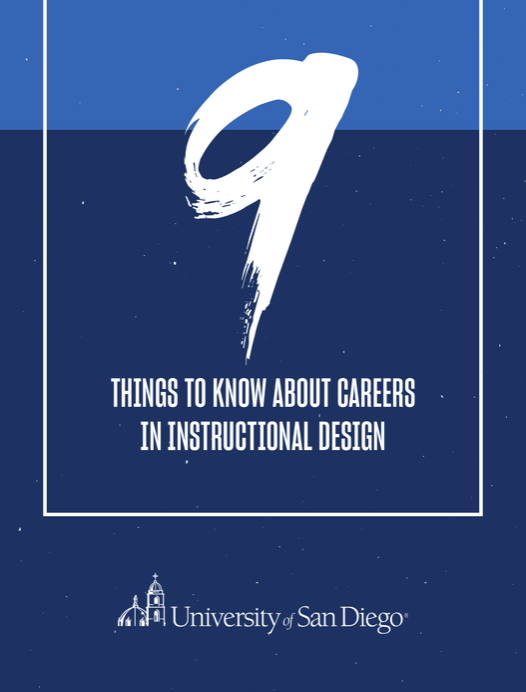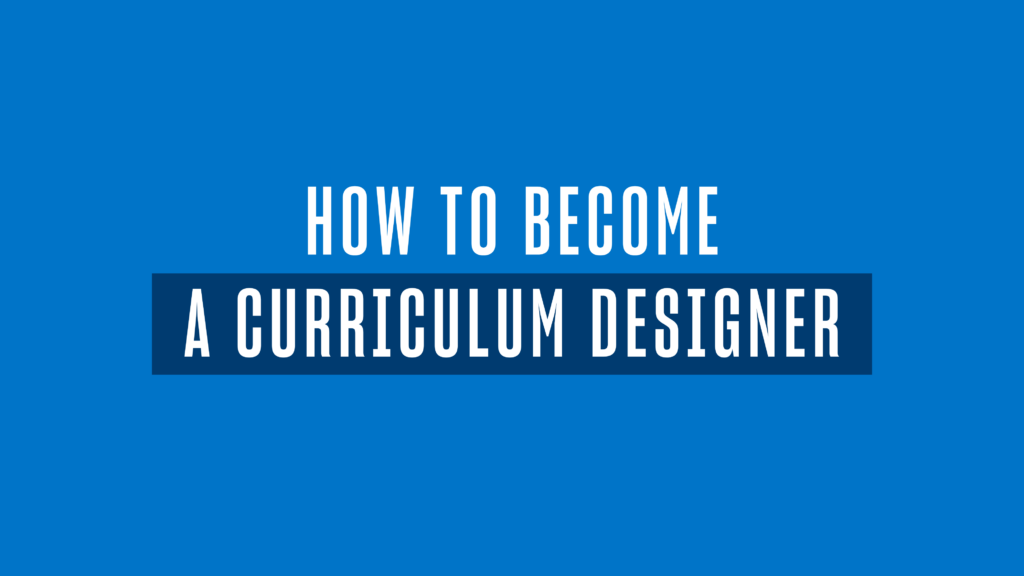In recent years, the demand for online learning experiences has grown significantly — and it isn’t expected to slow down. To help meet this demand, educational institutions and other virtual learning providers must create courses that not only meet learning objectives but keep learners engaged as well.
This is where eLearning designers come in. From laying the groundwork for virtual learning programs to overseeing their development, these professionals are part of the team responsible for creating online courses. Keep reading to find out everything you need to know about becoming an eLearning designer.
eLearning Designer: What to Know About the Role
To know whether or not this is the right career for you, it’s important to fully understand the role of an eLearning designer — including what defines the position, what it entails and the skills you’ll need to succeed. Let’s take a closer look at each of these components.
What is an eLearning designer?
An eLearning designer’s job is to create learning programs for online courses. This typically involves curriculum design, consulting with subject matter experts (SMEs) to ensure programs are well-structured and guiding the course’s development as it takes shape and becomes ready for implementation.
What does an eLearning designer do?
Since eLearning designers work on the planning phase of eLearning projects, responsibilities usually include finalizing content, storyboarding, and curating or developing multimedia assets. To perform these tasks successfully, and deliver an end product that best serves learners, eLearning designers must have a thorough understanding of the program’s intended objectives.
What skills do successful eLearning designers need to have?
Because so much of what eLearning designers do involves a mix of critical thinking, working with others and technology, you’ll need the following skills to excel in this role:
- Communication
- Consulting
- Instructional design
- Organization
- Project management
- Technical
- Visual design
- Writing
[RELATED RESOURCE] Want to develop the skills top employers seek? Explore how instructional design prepares you for career success.
eLearning Designer, Instructional Designer & eLearning Developer: What’s the Difference?
In the field of online learning, there are several roles that, at surface level, may seem similar but that are actually quite different. When it comes to eLearning designers, two of the positions that are most closely related are instructional designers and eLearning developers. Here’s how you can tell them all apart:
- eLearning Designer: As previously mentioned, eLearning designers plan learning programs for online courses, including developing curricula, confirming content and writing syllabi. These professionals are involved in structuring a program and getting it ready for implementation.
- Instructional Designer (ID): Where eLearning designers are responsible for the bones of virtual learning programs, instructional designers oversee fleshing them out with course content. Like eLearning designers, IDs work with SMEs, but in a different capacity. They rely on expert input to help inform the topics a course should explore instead of architecting its structure. Overall, it’s an ID’s responsibility to make the learning experience compelling and impactful.
- eLearning Developer: Once an online course is structured with content, eLearning developers assemble the final product. These professionals use course authoring tools and software to publish programs, making them accessible to learners. Unlike eLearning designers and IDs, eLearning developers are specialists and don’t require a background in instructional design.
How to Become an eLearning Designer
If you think this role might be a good match for your skills and interests, you’re also most likely wondering what it takes to start a career in eLearning design.
The first step is to determine whether you have the right qualifications. Typically, the path to becoming an eLearning designer includes earning a bachelor’s degree in a related field of study (such as education, psychology or digital communications), gaining experience as an instructor and developing the technical skills necessary to implement an online curriculum. While not strictly necessary, having a master’s degree, such as USD’s MS in Learning Design and Technology, is a great way to make your application stand out to prospective employers.
There is no one right way to become an eLearning designer. With that in mind, the next step is to determine the path that aligns with your qualifications and experience. The most common way people come to the role is through a combination of education and experience — with some transitioning from other career tracks, such as mechanical design, instructional design and user experience design.
eLearning Designer Salary & Career Outlook
According to Zippia, an online career search company, the demand for eLearning designers is expected to increase by 7% between 2018 and 2028. Related fields are also experiencing growth, with the employment of training and development specialists predicted to rise by 6% and instructional coordinators by 2% (both between 2022–2032).
And who will be doing the hiring? Many eLearning designers work for online learning vendors who service government, non-profit, and healthcare institutions, with others serving private businesses. Some eLearning design professionals may also work in educational settings, such as elementary schools, middle schools, high schools and universities.
As for compensation, the exact amount depends on factors such as location and employer. However, the average annual salary for this position is $65,312, with a range between $47,000 and $90,000.
[FREE GUIDE] Ready for a career with impact and high pay? Discover how instructional design offers rewarding opportunities.
eLearning Designer FAQs
Ready to Take the First Step?
The decision to start your career as an eLearning designer takes time. There’s a lot to think about when weighing your options, but when you consider your skills and qualifications and stay honest about your career goals, the choice becomes much more manageable.
Knowledge of instructional design is a key to success in your future career in eLearning design, and our free eBook, 9 Things to Know About Careers in Instructional Design, is a great resource for planning your next steps. Download your copy today or visit our program page for more information.



![What Does an Instructional Designer Do? [Career Info & FAQs]](https://onlinedegrees.sandiego.edu/wp-content/uploads/2021/08/ldt_blog_whatdoesiddo-1024x576.png)
![Top Jobs and Careers in Learning Design and Technology [+ Salary Info]](https://onlinedegrees.sandiego.edu/wp-content/uploads/2021/08/ldt_blog_topjobsld-1024x576.png)
